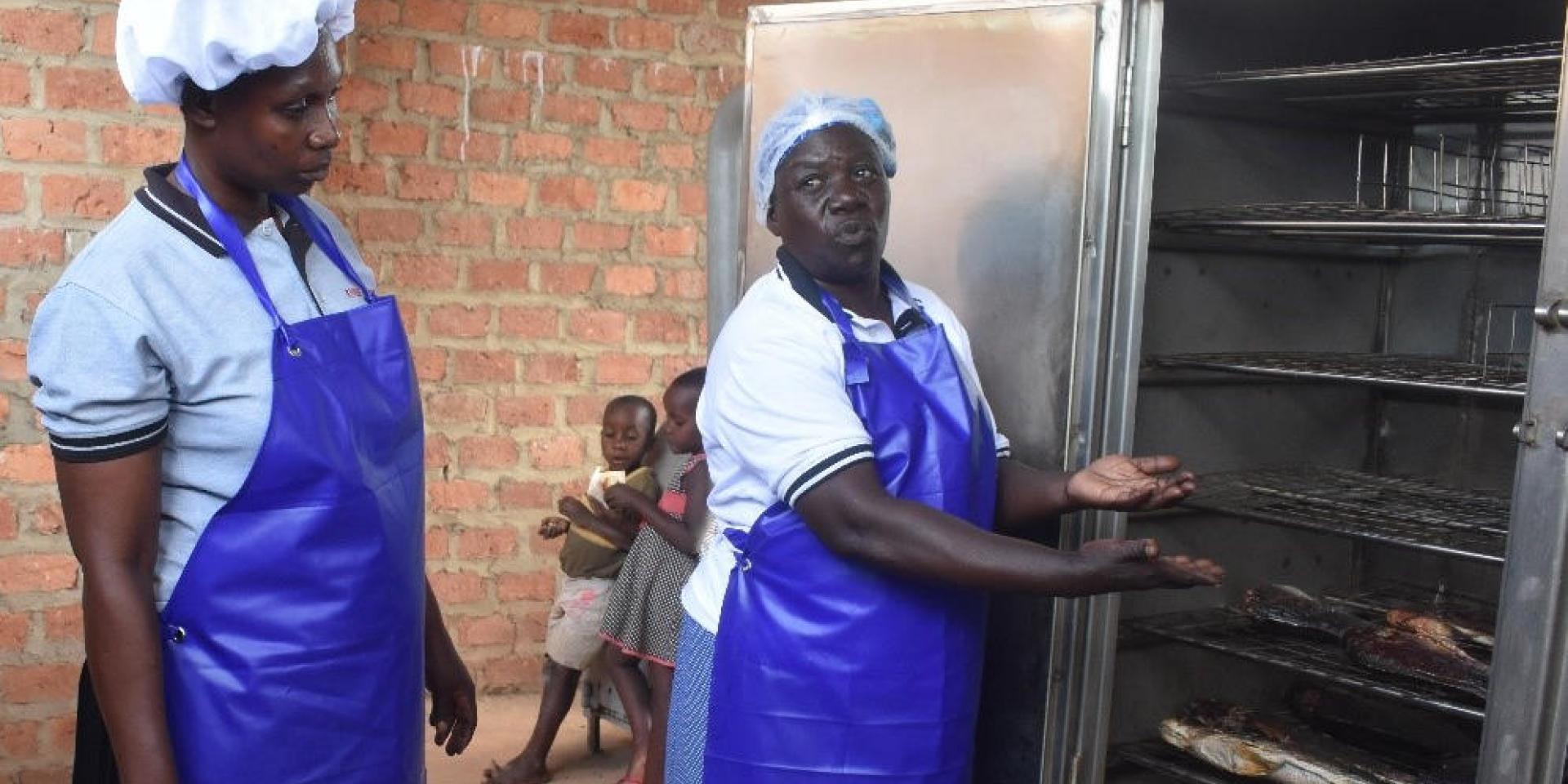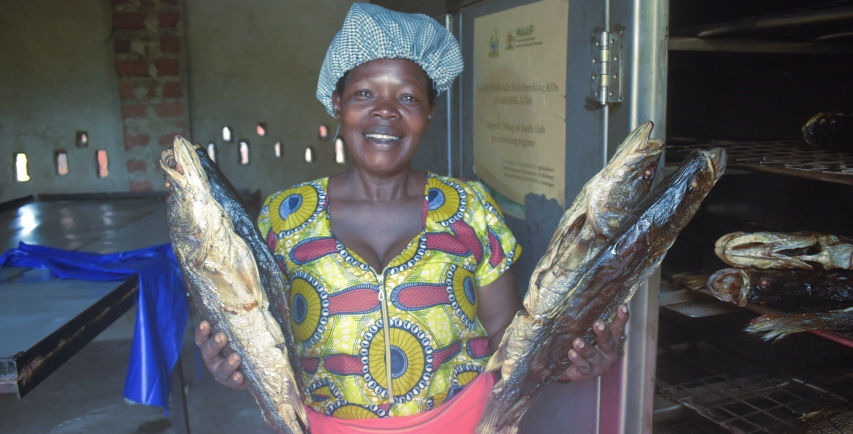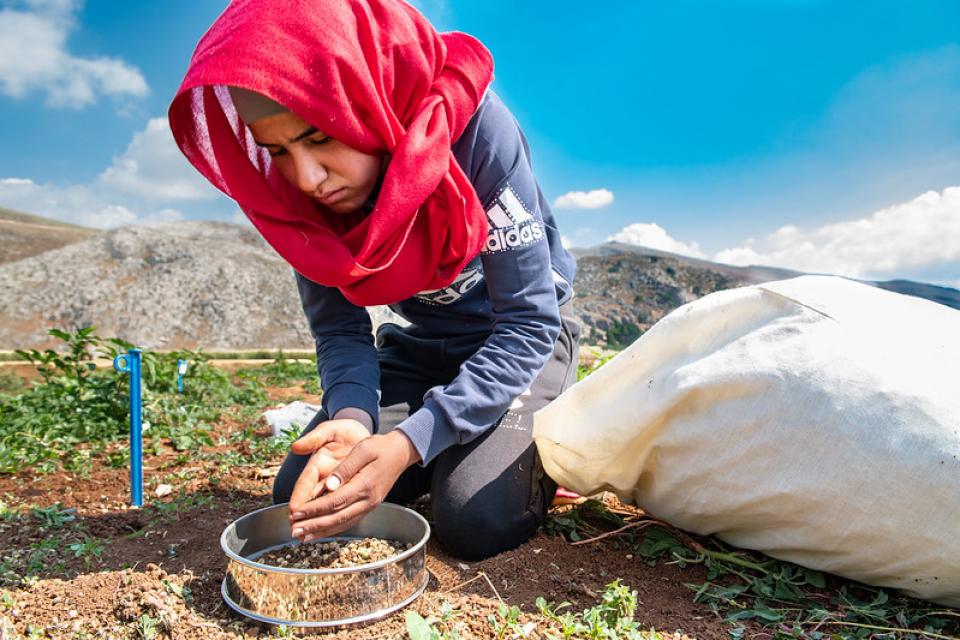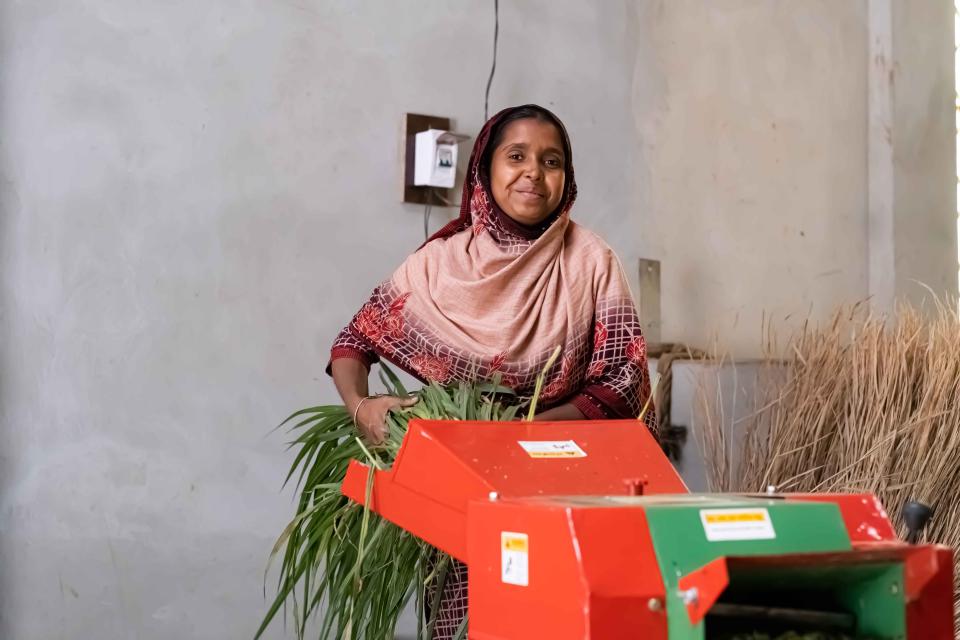Ugandan fish smoking kiln cuts cancer risks
 Photo: Abraham Kibirige.
Photo: Abraham Kibirige.
In early 2023, the CGIAR GENDER Impact Platform ran a series of virtual training modules for science communicators on how to develop and pitch stories on agricultural technologies that work for women.
The story below was produced by Victoria Mbigidde and originally published by SciDevNet as a result of this training. Enjoy!
Speed read
- Women dominate the fish processing industry in Uganda
- The process of smoking the fish could expose the women to cancer
- But a new fish smoking kiln is helping improve their health and livelihoods
--
Pioneers of a fish smoking kiln designed to reduce the risk of cancer and other health problems say it is improving the lives and livelihoods of hundreds of women in Uganda.
The women, who dominate the country’s fish processing industry, have for decades suffered the effects of smoking fish using locally made ovens, spending sleepless nights watching over their fish to stop them from getting burnt or stolen.
The new fish smoking kiln was developed by scientists at the engineering arm of Uganda’s National Agricultural Research Organisation.
“The women used to smoke fish for two-three days, and it would go bad within two days. With the new fish kiln, they smoke for 12 hours, and the fish will last for a month.” -- Nakato Priscilla, Hope Katosi Fish Processing Association
John Yawe, a scientist at the organisation, said it was developed to reduce cancer risks as well as the burdens women face while smoking fish.
“In addition to reducing the cancer-causing agents, it was largely designed with women at the centre because it is mostly women involved in the fish smoking industry,” Yawe said.
Yawe says that the kiln reduces impurities and cancer-causing elements such as polycyclic aromatic hydrocarbons from the locally smoked fish, from up to 40,000 parts per billion to two parts per billion.
“The polycyclic aromatic hydrocarbons are as a result of burning wood, garbage, plastic and they are associated with increased cancer cases in addition to reduced lung functionality, asthma, lung and heart diseases.”

Namirimu Christine, a member of Kiyindi Women Fish Processor’s Association, displays Nile Perch, smoked using the new kiln and ready for sale. Photo by Abraham Kibirige.
Yawe adds that the kiln has a smoke filter that removes all impurities from the generated smoke
Members of the Women of Hope Katosi Fish Processing Association, who are among those benefiting from the kiln, say it is improving women’s livelihoods by making the process more efficient.
Priscilla Nakato, vice chairwoman of the association, said the innovation had the potential to significantly transform fish processing operations.
“The women used to smoke fish for two to three days and it would go bad within two days,” she told SciDev.Net.
“With the new fish kiln, they smoke for 12 hours and the fish will last for a month.”
Nakato told SciDev.Net that the women take pride in being part of the association because it enables them to earn a living to look after their families and educate their children.
Fatuma Nassiwa, a member of the association, tells SciDev.Net that the new kiln has improved the quality of life the of the women.
“Since we started using the new kiln, we are more peaceful and less worried about the safety and quality of our fish,” said Nassiwa.
“I can load the fish and do other house chores or even go to the market – unlike before, when I would sit there throughout, monitoring the fish so it does not get burnt.”
Nassiwa said that before they had the new kiln, marriages were in turmoil because of the fish stench.
“However much we bathed and soaked our clothes in detergent, the fish stench would stay,” she said, adding: “This caused our husbands to abandon us for ‘cleaner’ women.”
According to Kamya Simon, fish kiln cluster coordinator at the National Agricultural Research Organisation, 165 women fish processors from the Kaliro fish farmers cluster have also benefitted from the kiln.
Simon says it has made fish processing easy for the women and helped expand their market beyond Uganda to include the Democratic Republic of Congo, Kenya, and Rwanda.
“This is because they are able to meet the required standard for the export market of less than two parts per billion, as recommended by the World Health Organization and the European Union,” Simon said.
--
Disclaimer: This story has not been reviewed by the CGIAR GENDER Impact Platform; the views expressed here are those of the author(s) and do not necessarily reflect the views of the Platform.


